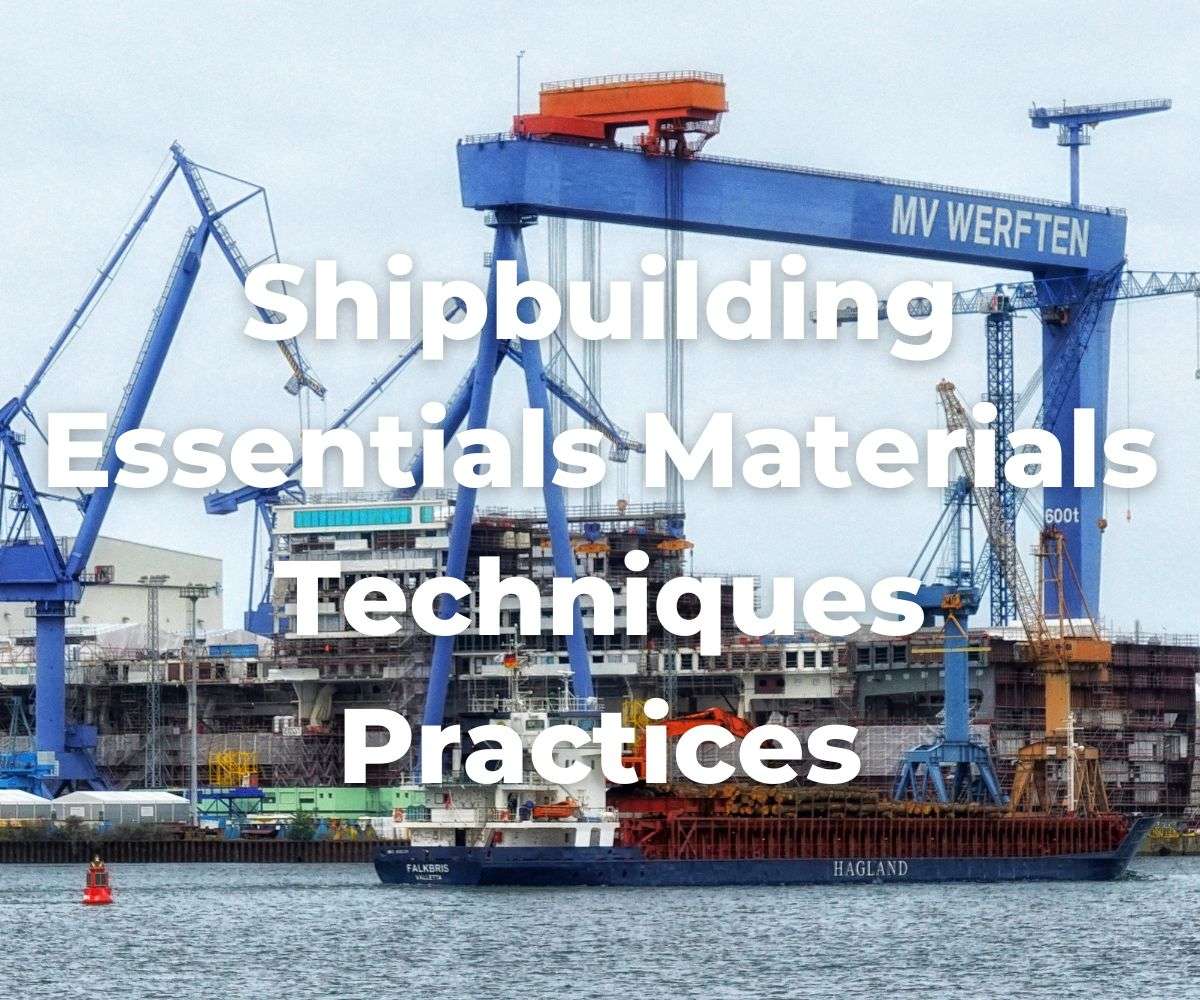shipbuilding essentials materials techniques practices
Description
Shipbuilding Essentials: Materials, Techniques, and Best Practices
Shipbuilding is a complex and highly specialized industry that has evolved over centuries. Whether constructing a small fishing vessel or a massive ocean liner, the process requires meticulous planning, expert craftsmanship, and the right materials.
Understanding the essentials of shipbuilding can help ensure that ships are strong, efficient, and capable of withstanding harsh marine environments. In this post, we’ll explore the key materials used, the fundamental techniques employed, and the best practices to follow for successful ship construction.
Essential Materials in Shipbuilding
Selecting the right materials is crucial to ensuring a ship’s durability, efficiency, and safety. The most commonly used materials in shipbuilding include:
1. Steel
Steel is the backbone of modern shipbuilding. It is widely used due to its strength, durability, and resistance to impact. Different grades of marine steel, such as high-tensile steel and mild steel, are chosen based on the ship's structural needs. High-tensile steel is often used for hulls and decks to provide additional strength while keeping the weight manageable.
2. Aluminum
Aluminum is valued for its lightweight properties, which enhance fuel efficiency and reduce a ship’s weight without compromising strength. It is commonly used in high-speed vessels, ferries, and military ships where weight reduction is a priority. However, aluminum is more expensive than steel and requires specialized welding techniques.
3. Fiberglass
Fiberglass is a composite material commonly used for smaller boats and yachts. It is lightweight, resistant to corrosion, and easy to mold into different shapes. While not as strong as steel, fiberglass offers excellent longevity and requires minimal maintenance.
4. Wood
Although wood is not as commonly used in large-scale shipbuilding today, it remains a popular choice for traditional boats, yachts, and smaller vessels. Wood is aesthetically pleasing and provides natural buoyancy, but it requires regular maintenance to prevent rot and insect damage.
5. Composites and Advanced Materials
Modern shipbuilding increasingly incorporates composite materials, such as carbon fiber and reinforced plastics, for their high strength-to-weight ratios and resistance to corrosion. These materials are particularly beneficial for naval and high-performance vessels.
Key Shipbuilding Techniques
Building a ship involves multiple techniques, each playing a crucial role in the final product’s strength and functionality. Here are some fundamental shipbuilding techniques:
1. Welding and Riveting
Welding is the primary method for joining metal components in modern shipbuilding, providing a strong, watertight, and structurally secure connection. The use of a steady rest during the welding process helps maintain stability, ensuring precision and reducing material distortion.
While riveting was once a standard technique in ship construction, it has become less common with the advancement of welding technology, which offers greater efficiency and durability.
2. Modular Construction
Many modern shipyards employ modular construction, where different sections of the ship are built separately and then assembled. This technique increases efficiency and reduces construction time by allowing different parts of the ship to be worked on simultaneously.
3. Computer-Aided Design (CAD)
Technology plays a significant role in shipbuilding, with CAD software being used to design ships with precision. This allows for accurate modeling, testing of structural integrity, and identification of potential weaknesses before construction begins.
4. Hull Fabrication and Assembly
The hull is the most critical component of a ship, designed to provide buoyancy and strength. Shipbuilders use advanced bending and shaping techniques to form the hull, ensuring it meets hydrodynamic efficiency and stability requirements.
5. Surface Coating and Protection
To protect ships from harsh marine environments, special coatings and paints are applied to the hull and other exposed surfaces. Anti-corrosion coatings, antifouling paints, and thermal barriers help enhance durability and reduce maintenance needs.
Best Practices in Shipbuilding
Adhering to best practices ensures that ships meet safety regulations, perform efficiently, and have a long operational life. Here are some essential best practices in shipbuilding:
1. Compliance with Safety and Environmental Regulations
Shipbuilders must adhere to international standards and regulations, such as those set by the International Maritime Organization (IMO). Compliance ensures that ships are safe, environmentally friendly, and meet the necessary operational requirements.
2. Quality Control and Testing
Every stage of shipbuilding should include rigorous quality control measures. Testing methods such as ultrasonic inspections, X-rays, and pressure tests help detect defects and ensure that each component meets industry standards.
3. Sustainable Shipbuilding Practices
With growing environmental concerns, the industry is moving toward sustainable practices, such as using eco-friendly materials, reducing emissions, and incorporating energy-efficient designs. Hybrid propulsion systems and alternative fuels are also being explored to minimize environmental impact.
4. Skilled Workforce and Training
A highly skilled workforce is essential for successful shipbuilding. Ongoing training in advanced technologies, safety protocols, and emerging materials ensures that shipbuilders stay ahead of industry advancements.
5. Proper Maintenance Planning
Shipbuilding doesn’t end when the vessel is launched. Proper maintenance planning, including corrosion protection, hull inspections, and engine servicing, ensures the ship remains in optimal condition throughout its lifespan.
In Conclusion
Shipbuilding is a dynamic field that requires expertise in materials, construction techniques, and industry best practices. By understanding the essential materials, employing advanced techniques, and following best practices, shipbuilders can construct vessels that are strong, efficient, and built to withstand the challenges of the sea.
As the industry continues to evolve, innovations in materials and technology will further enhance shipbuilding efficiency, sustainability, and safety.






















